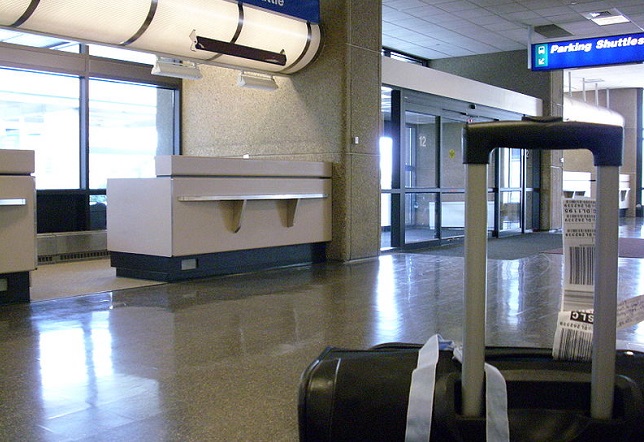The quick response codes had been worked into activities for children on the holiday Monday.
Family Day is a holiday celebrated in several Canadian provinces, in which schools, many businesses and government offices are closed, giving families some time to spend together in February, and library branches in Ontario’s Chatham-Kent region decided to use QR codes to make that quality time a bit more fun.
The Chatham-Kent Public Library branches have used quick response codes to use tech to enhance activities.
The QR codes were found at several of the library branches and were used in a tech based quest. This activity was available to all who wanted to participate and could be enjoyed on a drop-in basis, without any type of advance registration needed. The point of this technology friendly activity was to design a game that employed readily available mobile devices in a way that would help to make the library more fun and relevant to young members of the community.
The barcodes were used in an activity called the QR Codes Quest, which worked like a scavenger hunt.
 This is not the first time that QRcodes have been used in a scavenger hunt style activity, nor is it even the first time this type of thing has occurred in a library environment. However, it does show that the use of mobile devices and quick response codes is becoming increasingly commonplace in this type of environment.
This is not the first time that QRcodes have been used in a scavenger hunt style activity, nor is it even the first time this type of thing has occurred in a library environment. However, it does show that the use of mobile devices and quick response codes is becoming increasingly commonplace in this type of environment.
The Quest was available from 3pm to 8pm at the Highgate Branch. The Ridgetown Branch held it from noon to 5pm. This gave locals a chance to drop in at the time that was most convenient to them and take part in the activity with their families.
The use of QR codes is growing when it comes to this type of activity because they are extremely easy for people to use, they rely on technology that is easily available and they are quite inexpensive for the libraries to be able to obtain and implement. Barcode generators are easy to use and it the only costs associated with printing them out are from the paper and ink.
These types of mobile technology are all being implemented to help to add value to the experience for travelers.
The Balogna Airport has revealed that it will be using a range of different forms of mobile technology, including geolocation beacons, near field communication (NFC) tags, and even QR codes to help to enhance the experience of travelers who make their way through this location.
There are about 7 million passengers that make their way through the airport every year.
By using geolocation beacons with Bluetooth low-energy technology, and by combining that with NFC tags and quick response codes, the Balogna Airport is hoping to be able to reach as many travelers as possible, regardless of the model or make of their mobile phones. Using these various types of tech, it will become possible for the airport to send pro-active notifications to travelers such as promotions and alerts. These will be sent directly to the smartphones so travelers will be able to receive them when they are most relevant to their present locations.
For travelers to receive these geolocation technology based benefits, they must use the free BLQ Balogna app.
 The purpose of the location based technology, the NFC tags and the QR codes is to make it possible for passengers to quickly and easily obtain the app and take advantage of everything the airport has to offer, no matter where they happen to be. The airport worked with Connecthings, a mobile tech company, in order to launch this project. The notifications sent to the app will be managed by airport staff who have access to a dedicated content management platform.
The purpose of the location based technology, the NFC tags and the QR codes is to make it possible for passengers to quickly and easily obtain the app and take advantage of everything the airport has to offer, no matter where they happen to be. The airport worked with Connecthings, a mobile tech company, in order to launch this project. The notifications sent to the app will be managed by airport staff who have access to a dedicated content management platform.
The airport’s IT & innovations manager, Silvia Lombardi, said that “Connecthings’ innovative solution will allow us to create new ways of interactions between our BLQ Bologna application and the dozens of installed, connected beacons within the airport – hence improving our customers’ dedicated information services.”
She added that these digital services give the airport the chance to engage with all visitors and travelers who find themselves there. It provides them with facilitated airport orientation so they will be able to use their favorite devices – which will automatically know where they are via geolocation – to find exactly what they need and learn about offers, opportunities and solutions of which they might not otherwise have been aware.
 This is not the first time that QRcodes have been used in a scavenger hunt style activity, nor is it even the first time this type of thing has occurred in a library environment. However, it does show that the use of mobile devices and quick response codes is becoming increasingly commonplace in this type of environment.
This is not the first time that QRcodes have been used in a scavenger hunt style activity, nor is it even the first time this type of thing has occurred in a library environment. However, it does show that the use of mobile devices and quick response codes is becoming increasingly commonplace in this type of environment.
 The purpose of the location based technology, the NFC tags and the QR codes is to make it possible for passengers to quickly and easily obtain the app and take advantage of everything the airport has to offer, no matter where they happen to be. The airport worked with Connecthings, a mobile tech company, in order to launch this project. The notifications sent to the app will be managed by airport staff who have access to a dedicated content management platform.
The purpose of the location based technology, the NFC tags and the QR codes is to make it possible for passengers to quickly and easily obtain the app and take advantage of everything the airport has to offer, no matter where they happen to be. The airport worked with Connecthings, a mobile tech company, in order to launch this project. The notifications sent to the app will be managed by airport staff who have access to a dedicated content management platform.